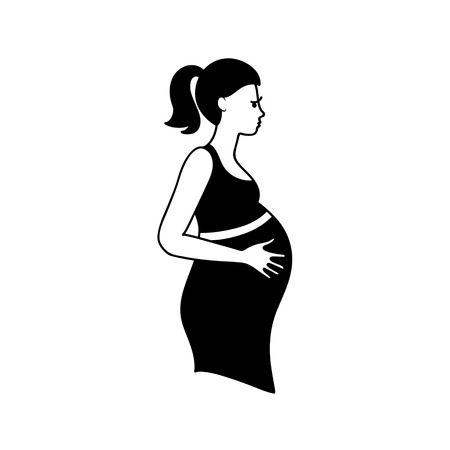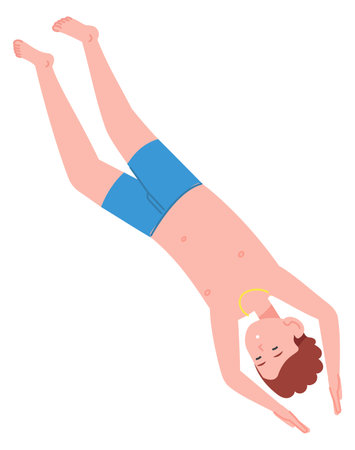1. Understanding the Benefits of Exercise in Early Pregnancy
Staying active during the first trimester can have numerous benefits for both you and your baby. While fatigue and morning sickness may make it challenging to exercise, engaging in safe physical activity can help improve overall health, reduce pregnancy discomforts, and support emotional well-being.
How Exercise Supports Overall Health
Regular physical activity during early pregnancy helps maintain cardiovascular health, improves circulation, and supports muscle strength. It also plays a key role in managing weight gain and reducing the risk of gestational diabetes.
Reducing Pregnancy Discomforts
Exercise can help alleviate common first-trimester symptoms such as bloating, constipation, and fatigue. Gentle movement encourages digestion and boosts energy levels, making daily activities feel more manageable.
Promoting Emotional Well-Being
Prenatal exercise is not just about physical health—it also has a positive impact on mental well-being. Staying active releases endorphins, which help reduce stress, anxiety, and mood swings that are common during early pregnancy.
Recommended Activities vs. Exercises to Avoid
| Safe Exercises | Avoid These Exercises |
|---|---|
| Walking | Contact sports (e.g., soccer, basketball) |
| Prenatal yoga | High-impact exercises (e.g., jumping, sprinting) |
| Swimming | Exercises with a high risk of falling (e.g., skiing, horseback riding) |
| Stationary cycling | Lifting heavy weights without proper guidance |
Selecting the right type of exercise ensures you stay active while minimizing risks. Always listen to your body and consult with your healthcare provider before beginning any new workout routine.
2. Safe and Recommended Exercises for the First Trimester
Staying active during your first trimester can help boost your energy, reduce stress, and support a healthy pregnancy. The key is to focus on low-impact workouts that are gentle on your body while still keeping you moving. Here are some of the best exercises to consider:
Walking
Walking is one of the safest and easiest exercises you can do during early pregnancy. It helps maintain cardiovascular health, improves circulation, and keeps muscles engaged without putting too much strain on your joints.
Prenatal Yoga
Prenatal yoga is designed specifically for pregnant women and focuses on gentle stretching, breathing techniques, and relaxation. It can help improve flexibility, reduce stress, and relieve common pregnancy discomforts like back pain.
Swimming
Swimming and water aerobics provide a full-body workout with minimal impact on your joints. The buoyancy of water supports your growing belly while allowing you to move freely and stay cool.
Strength Training
Light strength training with body weight or light dumbbells can help maintain muscle tone and support good posture. Focus on controlled movements and avoid heavy lifting or exercises that put pressure on your core.
Comparison of Safe First-Trimester Exercises
| Exercise | Benefits | Precautions |
|---|---|---|
| Walking | Improves heart health, boosts energy, easy to do anywhere | Avoid uneven surfaces to prevent falls |
| Prenatal Yoga | Enhances flexibility, reduces stress, promotes relaxation | Avoid deep twists or poses that put pressure on the belly |
| Swimming | No joint impact, full-body workout, keeps you cool | Avoid jumping or sudden movements in the water |
| Strength Training | Keeps muscles strong, supports posture, prevents aches | Avoid heavy weights and exercises that strain the abdomen |
Tuning Into Your Body’s Signals
No matter which exercise you choose, its important to listen to your body. If you feel dizzy, overly fatigued, or experience any pain or discomfort, stop immediately and rest. Always consult with your healthcare provider before starting a new workout routine during pregnancy.

3. Exercises to Avoid During the First Trimester
While staying active during pregnancy is beneficial, some exercises can pose risks to both you and your baby. Its important to be aware of movements and activities that may not be safe during the first trimester.
High-Impact Sports
Sports that involve high-impact movements or a risk of falling should be avoided. These activities can put excessive strain on your body and increase the chances of injury.
| Exercise | Potential Risks |
|---|---|
| Basketball | Risk of falls, collisions, and abdominal impact |
| Skiing (downhill) | High risk of falls and loss of balance |
| Horseback riding | Risk of falling off and sudden jolts to the body |
| Soccer | Possible collisions and abdominal trauma from the ball |
Heavy Lifting
Lifting heavy weights can put too much strain on your core and back, increasing the risk of injury. If you do strength training, opt for lighter weights with more repetitions instead of heavy lifting.
Exercises That Require Lying Flat on Your Back
Lying flat on your back for long periods can compress a major blood vessel called the vena cava, which may reduce blood flow to your baby. Try modifying exercises by using an incline or side-lying positions.
Avoid These Exercises:
- Certain yoga poses that require lying flat for extended periods
- Pilates moves performed on the back after the first trimester begins
- Bicycle crunches in a supine position
Listen to Your Body
The most important thing is to listen to your body. If an exercise feels uncomfortable or causes pain, stop immediately. Always check with your healthcare provider before starting any new workout routine during pregnancy.
4. Listening to Your Body: Signs to Stop or Modify Workouts
Exercising during the first trimester is generally safe, but your body will give you signals when it’s time to slow down or stop. Paying attention to these signs can help prevent discomfort and potential complications. Here are key warning signs to watch for:
Warning Signs That Indicate You Should Stop or Modify Exercise
| Warning Sign | What It Means | What to Do |
|---|---|---|
| Dizziness or Lightheadedness | Your blood pressure and circulation change during pregnancy, which can make you feel dizzy. | Sit down, drink water, and rest until you feel better. Avoid sudden movements. |
| Shortness of Breath | Pregnancy affects lung capacity, making it harder to catch your breath. | Slow down, take deep breaths, and avoid high-intensity exercises. |
| Abdominal Cramping or Pain | This could be a sign that your body is under too much strain. | Stop immediately, rest, and consult your doctor if the pain persists. |
| Nausea or Vomiting | Pushing too hard can worsen pregnancy-related nausea. | Take a break, hydrate, and switch to gentler activities like walking or stretching. |
| A Rapid Heartbeat That Doesn’t Slow Down | Your heart is already working harder during pregnancy. If it feels too fast for too long, it may be overworked. | Sit down, breathe deeply, and let your heart rate return to normal before continuing. |
| Pain in Joints or Ligaments | Prenatal hormones loosen joints and ligaments, increasing the risk of injury. | Avoid high-impact movements and opt for low-impact exercises like swimming or prenatal yoga. |
Tuning Into Your Energy Levels
Your energy levels can fluctuate daily during the first trimester. Some days you may feel great; other days, even light movement might feel exhausting. That’s completely normal! If youre feeling unusually fatigued, listen to your body—rest when needed and choose gentle exercises like walking or stretching instead of intense workouts.
The Talk Test: A Simple Way to Monitor Intensity
A good rule of thumb is the “talk test.” If you can carry on a conversation while exercising without gasping for air, youre likely at a safe intensity level. If talking becomes difficult, slow down and modify your workout.
When to Contact Your Doctor
If you experience severe pain, vaginal bleeding, persistent dizziness, or any symptoms that feel unusual or concerning, stop exercising immediately and reach out to your healthcare provider. It’s always better to be cautious when it comes to prenatal fitness.
The key takeaway? Trust how you feel! Every pregnancy is different, so adjusting workouts based on your bodys signals will help keep you safe and comfortable throughout your first trimester.
5. Tips for Staying Active Safely
Staying active during the first trimester is beneficial for both you and your baby, but its important to exercise safely. Here are some expert-approved tips to help you maintain a safe and effective fitness routine.
Stay Hydrated
Hydration is key to preventing overheating and ensuring proper circulation. Make sure to drink plenty of water before, during, and after your workout. A good rule of thumb is to sip water every 15–20 minutes while exercising.
Wear Supportive Gear
Your body is going through changes, so investing in comfortable, supportive gear is essential. Consider wearing:
- A well-fitted sports bra for extra support.
- Cushioned sneakers with good arch support.
- Breathable, moisture-wicking clothing to stay cool.
Listen to Your Body
Pregnancy affects everyone differently, so pay attention to how you feel during workouts. If you experience dizziness, shortness of breath, or any discomfort, stop immediately and rest.
Modify Exercises as Needed
Certain exercises may need adjustments as your pregnancy progresses. Below is a quick guide on modifications:
| Exercise | Recommended Modification |
|---|---|
| Running | Switch to brisk walking if running feels uncomfortable. |
| Planks | Kneeling planks can reduce strain on your core. |
| Lifting Weights | Use lighter weights and focus on controlled movements. |
| Biking | A stationary bike can be safer than road cycling. |
Consult Your Healthcare Provider
If youre unsure about making changes to your workout routine, talk to your doctor or midwife. They can provide personalized recommendations based on your health and pregnancy needs.


